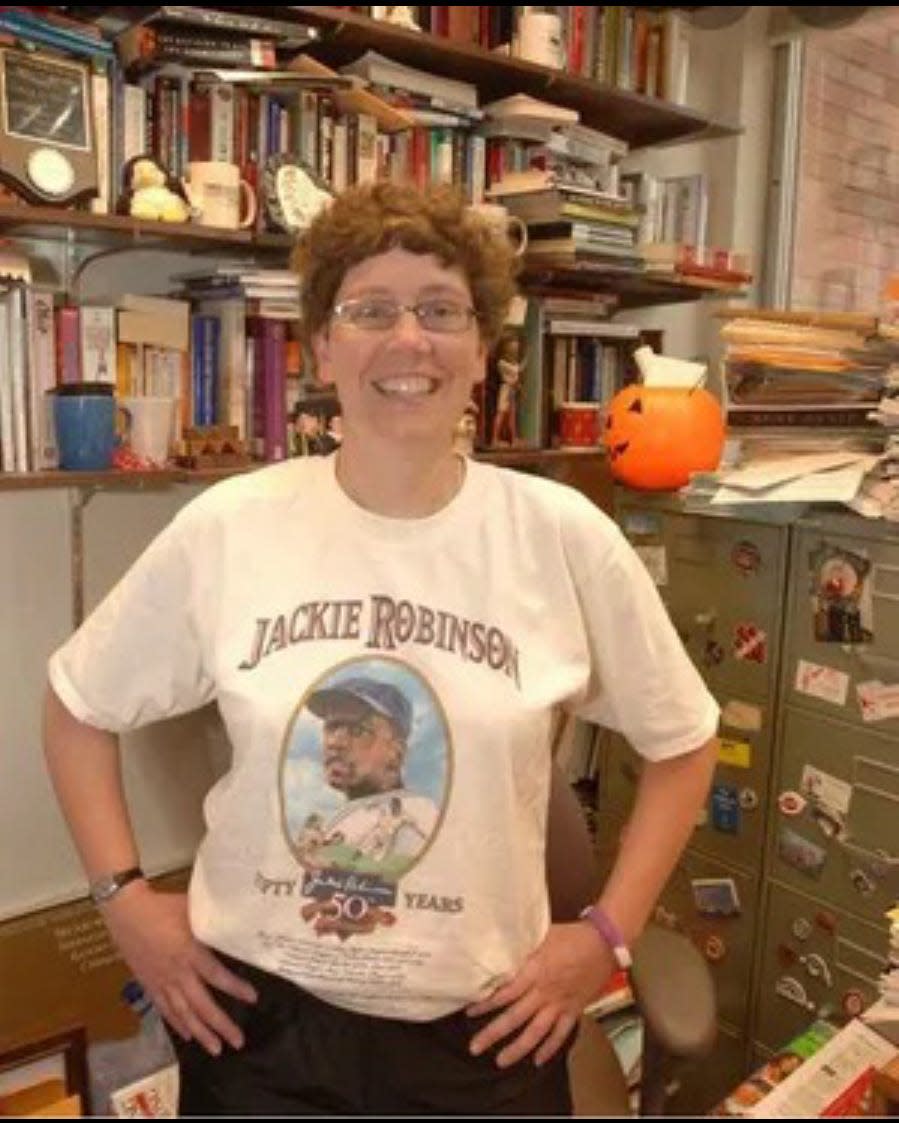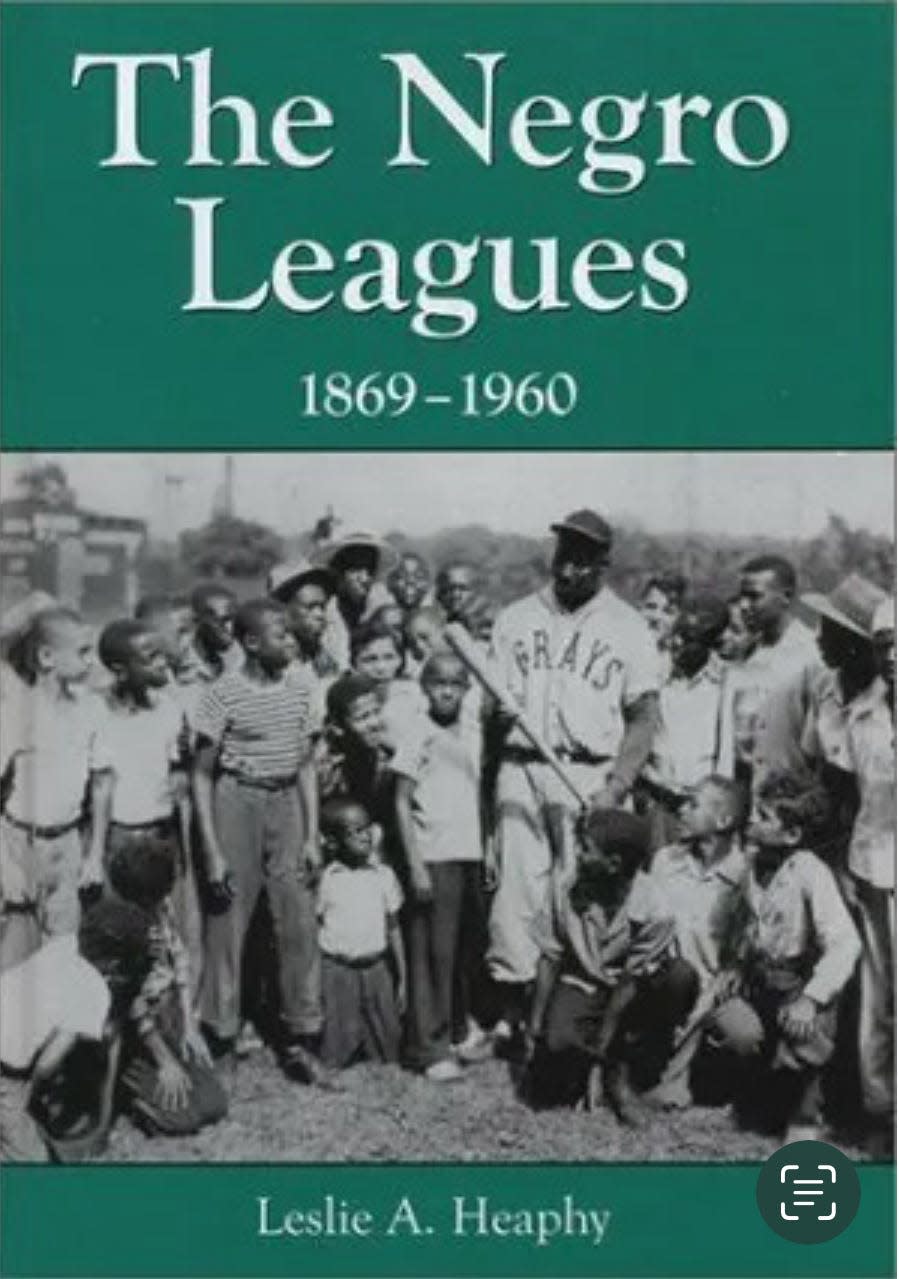The Monday After: KSU Stark educator overjoyed as Negro League stats join Baseball HOF

"Now, we in the Negro Leagues felt like we were contributing something to baseball, too, when we were playing. We played with a round ball and we played with a round bat. And we wore baseball uniforms and we thought that we were making a contribution to baseball. We loved the game and we liked to play it. But we thought that we should have and could have made the major leagues. ..." – Buck Leonard, acceptance speech, National Baseball Hall of Fame, quoted in "Buck Leonard, the Black Lou Gehrig: An Autobiography," with James A. Riley, and re-quoted leading into the introduction for Kent State University at Stark professor Leslie A. Heaphy in her book "The Negro Leagues 1869-1960."
Walter Fenner "Buck" Leonard. Josh Gibson. "Smokey" Joe Williams. Oscar Charleston. John Henry "Pop" Lloyd. Norman "Turkey" Stearnes. James Thomas "Cool Papa" Bell.
They were among the greatest athletes in baseball never to have played in the Major Leagues. They toiled for teams in the Negro Leagues.
"The Negro Leagues had some of the best talent in the game," wrote Leslie Heaphy, a history professor for Kent State University at Stark, in the introduction to her book, "The Negro Leagues 1869-1960." "As Buck O'Neil said after Leroy 'Satchel' Paige's funeral, 'Who is it that said he wasn't playing against the greatest ballplayers in the world?' The Negro Leagues had as much talent as any white league."
Now their feats on the field are being recognized by professional baseball, with their statistics alongside those of more modern "Major Leaguers."
"We are proud that the official historical record now includes the players of the Negro Leagues," said Commissioner Rob Manfred. "This initiative is focused on ensuring that future generations of fans have access to the statistics and milestones of all those who made the Negro Leagues possible. Their accomplishments on the field will be a gateway to broader learning about this triumph in American history and the path that led to Jackie Robinson’s 1947 Dodger debut."
According to Major League Baseball writer Anthony Castrovince, "MLB announced Wednesday that it has followed the recommendations of the independent Negro League Statistical Review Committee in absorbing the available Negro Leagues numbers into the official historical record."
Leslie A. Heaphy, nationally known as a Negro League historian and author or editor of four books about black baseball, was a member of that Statistical Review Committee.
"I was excited (to hear the announcement)," said Heaphy, reached at the 35th Cooperstown Symposium on Baseball and American Culture at the Baseball Hall of Fame in Cooperstown, New York, where she was on the program for the event. "And I was hopeful people would take this as an opportunity to learn."

Fueling the arguments
Long before Major League Baseball incorporated the statistics of black baseball players in seven Negro Leagues with those of players in today's integrated game – a process that began in 2020 and ended last week – Heaphy was a strong advocate for the inclusion of the Negro Leagues in the conversation about the best baseball players in the sport's history.
Now the educator sees the newly accepted statistics as stepping stones on which good-natured arguments can be based.
"My overall look at it is that baseball statistics people love to argue," she said. "We should think of this as a new thing to argue about. And this is a wonderful opportunity for people to learn about players they've never heard of before."
And, it is an opportunity for fans to learn more about players – some familiar, others unknown – who in recent days have risen to the top of all-time baseball rankings.
Star Negro Leagues catcher Josh Gibson of the Homestead Grays, for example, has had his name inserted above revered Major League Baseball hitters in such ball-striking categories as both single season (.466) and career (.372) batting average, while the legendary Kansas City Monarchs pitcher Satchel Paige slipped into the third spot for his single-season earned run average of 1.01 in 1944.
"Josh Gibson was the premier player in the Negro Leagues, a name we all know," said Heaphy. "It shouldn't have surprised anybody.
"But, somebody like (Norman) 'Turkey' Stearnes, he's far less known. He was a much quieter person. He was less talked about in the newspapers. But, suddenly, people are going to know about 'Turkey' Stearnes.”
And, now Stearnes ranks sixth in the updated Major League records for his .348 career batting average with the Detroit Stars in the 1920s and 1930s. Stearnes is in the argument of baseball fans about the best hitters of all time.
Developing the recommendations
What is less arguable is the set of criteria developed by the Negro League Statistical Review Committee for incorporating black baseball players statistics in the record books.
From the many briefly organized and long-standing leagues in which blacks were left to play in when they were segregated from the white-dominated world of professional baseball, seven leagues – existing from 1920 to 1948 – were deemed by the MLB in 2020 to be of a quality to have statistics of their players included in the record books.
"People can say 'they never played against the Major Leagues,'" said Heaphy, but she noted that other professional baseball leagues from late in the 1800s and early in the 1900s – the American and Union associations, as well as the Players' and Federal leagues – previously had statistics accepted into baseball record books. "They never played against Major League teams, either. The American League and National League didn't even play against each other during the regular season until relatively recently. And eras were different. We never really have compared apples to apples."
The standards for inclusion in MLB's records are the same for the Negro League players as they are for today's MLB players – 3.1 plate appearances for batters and 1.0 inning for pitchers for each scheduled game – noted Heaphy. A 60-game minimum season also was selected as a standard, which similarly conforms to the length of season National League teams played for a couple of seasons in the 1870s and the condensed 2020 60-game COVID pandemic season for Major League Baseball teams.
A multitude of barnstorming games, to raise money to keep teams afloat, kept Negro League teams seasons at about 60 games, according to the article by Castrovince at mlb.com. So, Negro League players standards were adjusted to conform to Major League players.
"As for career leaderboards, the current standard for career MLB leaders is 5,000 at-bats and 2,000 innings pitched, which roughly equates to 10 full qualifying seasons (5,020 at-bats and 1,620 innings)," he explained. "Therefore, for Negro Leagues players, this standard has been set at 1,800 at-bats and 600 innings – roughly the equivalent of 10 seasons’ worth of 60-game seasons."
Statistics lead to stories
The Statistical Review Committee will continue to meet to assure fairness in record-keeping as Negro League players statistics.
"Clearly there is a lot of work left to be done," Heaphy said.
The time ahead should be a period of learning, Heaphy hopes.
"A lot of people don't know about the Negro Leagues," she explained. "What was it like for these players? The statistics are just numbers, but those numbers are what is going to generate the learning of the stories behind the numbers.
"Getting the players recognition is important. But, to me, the most important thing is getting their stories told."
Reach Gary at gary.brown.rep@gmail.com. On "X" (Formerly Twitter): @gbrownREP.
This article originally appeared on The Repository: KSU Stark's Leslie Heaphy happy as Baseball HOF honors Nergo League stats

